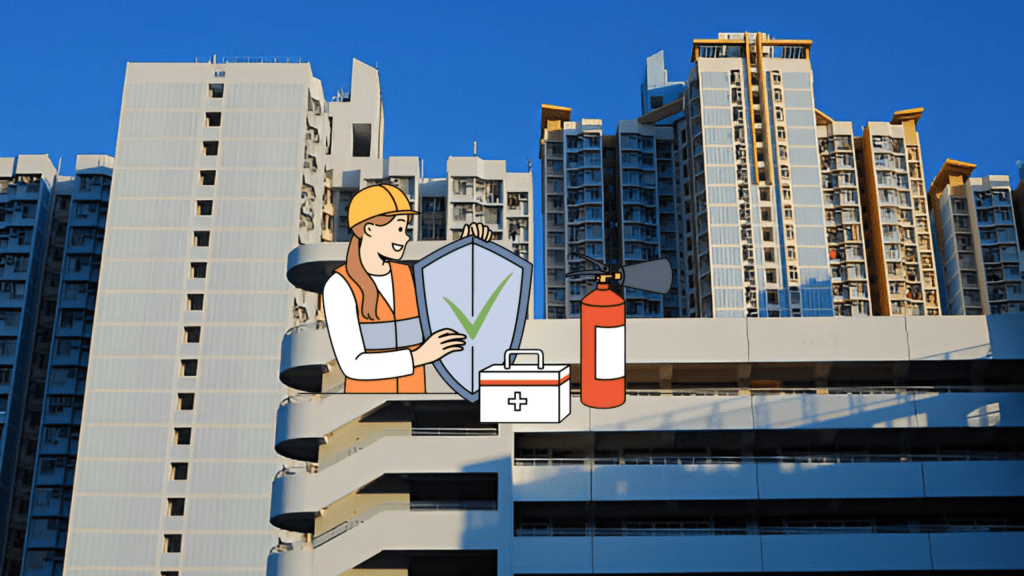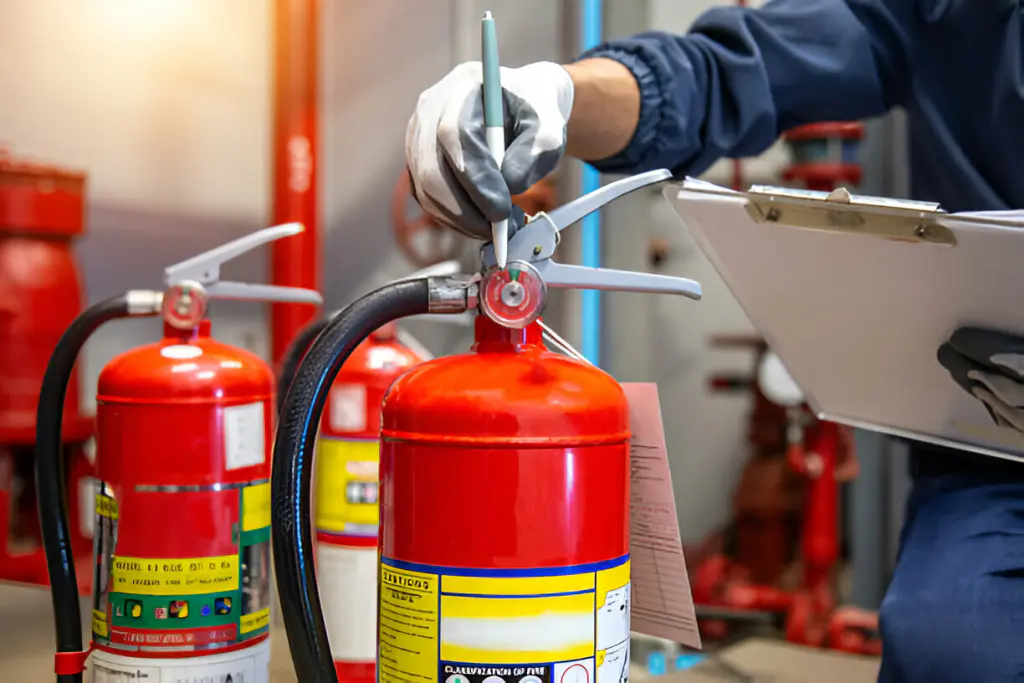Having conducted numerous fire risk assessments, I’ve come to realize that many people are unaware of the staggering statistics regarding fire incidents in buildings. The impact of a fire can be devastating, not only in terms of the physical damage caused but also the potential loss of life.

However, what most individuals might not know is that a thorough fire risk assessment can significantly reduce these risks and create a safer environment for everyone involved. Stay tuned to discover the key reasons why prioritizing fire risk assessments is paramount for the well-being of occupants and the protection of property.
Understanding Fire Risk Assessments
When conducting a fire risk assessment, one must thoroughly analyze the building to evaluate potential fire hazards and risks. Fire prevention is a key focus, requiring the identification of sources of ignition and flammability of substances. Safety measures such as ensuring firefighting equipment availability and clear escape routes are crucial.
Risk identification involves assessing people at risk and determining the Responsible Person for fire safety tasks. Emergency planning entails establishing fire detection methods and conducting regular fire safety training. Building inspections should cover fire exits, housekeeping practices, and fire alarm testing.
Legal Guidelines and Responsibilities
To comply with legal obligations regarding fire safety, the Responsible Person must ensure that a Fire Risk Assessment is conducted and kept up to date. Compliance standards dictate that buildings with 5 or more regular occupants must have a written assessment.
Safety regulations require a designated Responsible Person to oversee fire safety tasks. Regular review of the assessment is a legal obligation, ensuring that any changes in building layout or occupants are reflected in the safety plans.
Effective risk management involves continuous updates to the assessment, reflecting changes and ensuring the implementation of safety recommendations. Responsible personnel play a crucial role in maintaining legal compliance and ensuring the safety of building occupants.
Accessing and Requesting Assessments
Accessing and Requesting Assessments can be initiated by contacting the Responsible Person for building occupants’ right to access the Fire Risk Assessment. Occupants hold the right to request the assessment and can ask for a new assessment if none exists. The Responsible Person plays a crucial role in facilitating this process and ensuring timely access to the assessment.
If concerns arise regarding the assessment or if there are delays in receiving it, there’s an escalation process in place. Occupants can escalate the matter to the local fire service if their concerns aren’t adequately addressed by the Responsible Person. This ensures that assessment access is prioritized, maintaining a safe environment for all.
Conducting and Updating Assessments
Conducting a thorough assessment involves examining all essential fire risk factors in the building. To conduct assessments effectively, skills development is crucial. Assessors need to be adept at evaluating sources of ignition, flammability of substances, people at risk, and more.

Utilizing appropriate assessment tools is vital for accurate evaluation and risk mitigation. Continuous improvement is key; assessments should be regularly updated to reflect any changes in the building layout or occupancy. This process fosters safety awareness and ensures that fire safety measures remain effective.
Penalties and Review Process
Fire risk assessments play a crucial role in ensuring compliance with legal obligations and maintaining optimal levels of fire safety readiness within buildings. The review process involves a comprehensive assessment of fire risk factors tailored to the building’s complexity. Failure to comply with assessment requirements can result in severe penalties, including prosecution, significant fines, and potential imprisonment for not having a fire risk assessment in place.
Legal obligations mandate keeping assessments up to date, with an annual review recommended and new assessments required for substantial building changes. Understanding the consequences of non-compliance underscores the importance of conducting thorough fire risk assessments to mitigate risks effectively and ensure the safety of occupants and the building.
Frequently Asked Questions
Can a Building Owner Conduct Their Own Fire Risk Assessment, or Is It Required to Hire a Professional Fire Risk Assessor?
I can conduct my own fire risk assessment as a building owner. Legal requirements mandate keeping assessments up to date. Training is needed to assess factors accurately. Resources required include knowledge of fire risk elements. Safety measures must be implemented promptly.
How Often Should a Fire Risk Assessment Be Updated to Ensure It Reflects Any Changes in the Building Layout or Occupants?
I update fire risk assessments regularly to match building and occupant changes, ensuring safety compliance and effective risk mitigation. Frequent updates reflect alterations in layout or occupants, reinforcing proactive measures for optimal safety.
What Are Some Common Mistakes That Building Owners Make When Conducting Their Own Fire Risk Assessments?
As a responsible owner, common oversights in self-conducted fire risk assessments include neglecting regular updates, lacking proper documentation, and not aligning with industry standards. Owners must ensure thorough assessments for effective fire safety management.
Is There a Specific Format or Template That Should Be Used When Documenting a Fire Risk Assessment?
I use standardized templates for fire risk assessments to ensure consistency in documentation. Building owners should follow these formats or seek professional assessors. Regular updates, at least annually, are crucial to maintaining accuracy and compliance.
Are There Any Industry-Specific Guidelines or Regulations That May Impact the Fire Risk Assessment Process for Certain Types of Buildings or Businesses?
In my experience, industry standards, regulatory compliance, building occupancy, hazard identification, and risk mitigation greatly impact the fire risk assessment process. Adhering to these guidelines ensures a thorough and effective assessment for safety.
Conclusion
In conclusion, conducting thorough fire risk assessments is essential for ensuring the safety and well-being of individuals in buildings. By following legal guidelines, requesting assessments, and implementing safety measures, we can proactively mitigate potential fire hazards.
It’s crucial to regularly update assessments and be aware of the penalties for non-compliance. Let’s prioritize fire safety to create a secure environment for all building occupants and visitors.









